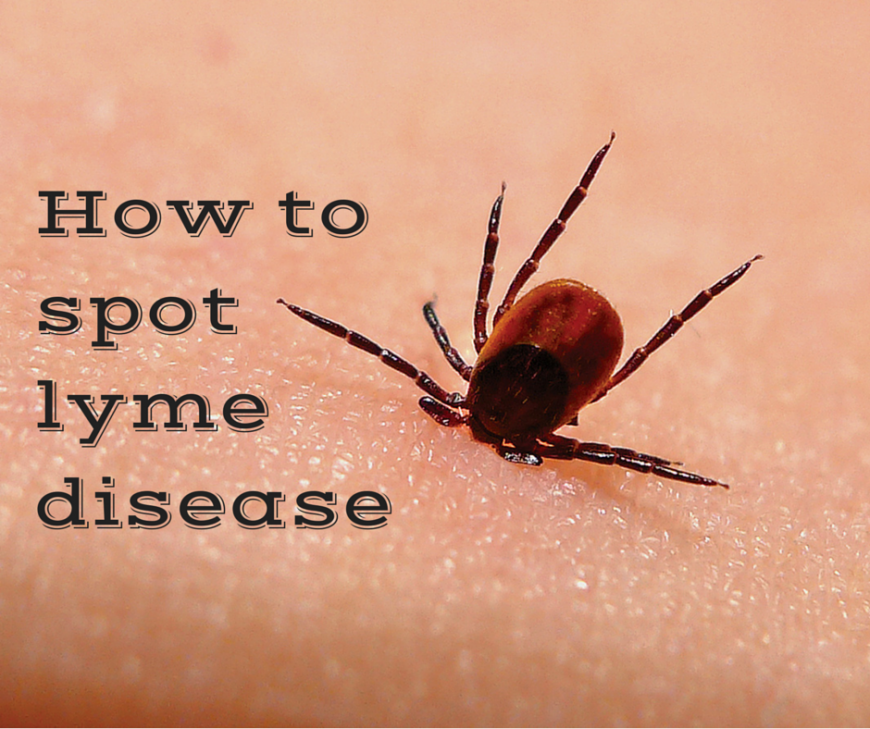
The weather is getting warmer and everyone wants to get outside after the long, cold New England winter. We want to play with our kids, hike with our dogs, and start getting a head start on all of our yard work. Unfortunately, we all keep hearing more and more about the prevalence of lyme disease, especially in the Northeast, and the fear of going outside and enjoying yourself gets worse and worse with every story. It doesn’t help that the disease is very difficult to diagnose, especially in its early stages when it is more easily treated.
Lyme disease is an illness that is transmitted from a tick bite when it transfers the bacterium Borrelia burgdorferi. If it is diagnosed early, it can be cured pretty quickly with a round of antibiotics. However, without early treatment, it can turn into a very serious illness involving the joints, heart, and nervous system. It can still be treated at this point, but may need larger doses or intravenous antibiotics. In addition, some people continue to have persistent fatigue and achiness after they have finished their treatment, which can take months to go away.
So what can you do if you are going to have a long day outside to make sure you have a better chance preventing a tick bite?
Wear more clothes!
Wearing long sleeves and tightly woven clothing can greatly help in preventing a tick from getting to the food source: your skin. In addition, you can wear long pants and tuck them into your socks for added protection. Light colors can also be helpful in being able to see the ticks on your clothing.
Use a repellant.
Repellants with DEET are known to be effective in repelling ticks. However, use in moderation and with caution as they are also shown to have some side effects.
Always do a “tick check” after a day outside, especially in wooded or grassland areas.
Have you heard the country song, “I want to check you for ticks?”
Toss your clothes in the dryer.
If you immediately remove your clothing after coming indoors and put them in the dryer, the heat will kill the ticks. That way they aren’t wandering around the house looking for their next meal!
Take a shower.
This can help wash those pesky buggers away before they can chomp down.
If you find a tick, remove immediately.
Since it takes a bit for the bacterium to be transmitted in the blood, you may avoid infection if you remove an infected tick early enough. Stay tuned for another blog post coming up regarding tips for tick removal.
You did all you could, but you still suspect you may have been infected, what are the early signs?
The bull’s eye rash
Erythema migrans, or more commonly known as the “bull’s eye rash,” occurs in 70%-80% of cases. It usually starts as a small red spot at the site of the tick bite and expands over a period of days or weeks. It can sometimes end up resembling a bull’s eye with a clear center and a red circle around it, hence the name. The rash can vary greatly in both its size and the length of time a person has it. It can be as small as a dime and as large as an entire person’s ba ck. It can range from a few days to a few weeks.
ck. It can range from a few days to a few weeks.
Other early symptoms:
- Fever
- Headache
- Stiff neck
- Body aches
- Fatigue
If you suspect that you may have a tick bite rash, call your doctor immediately for treatment.
Have a bull’s eye rash? To learn more about clinical research exploring early detection of Lyme disease after a tick bite and other topics, click here or call us directly at 603-319-8863.
For a list of our other Enrolling Studies click here.
Authored by: Ashley Skukalek, CCRC
Medically Reviewed by Marc Shay, MD
